The exploration of Moroccan culinary heritage reveals a fascinating intersection of history, culture, and flavor. Rooted in influences from Berber, Arab, and Andalusian traditions, this cuisine showcases a remarkable array of spices and techniques that have evolved over centuries. Iconic dishes like tagines and couscous tell stories of cultural exchanges and regional diversity. As one uncovers the layers of this culinary tapestry, the secrets behind its unique flavors beckon further investigation into the traditions and practices that shape modern Moroccan cooking. What hidden gems might await those who venture deeper into this rich gastronomic landscape?
Good To Know
- Moroccan cuisine is influenced by Berber, Arab, Andalusian, and Mediterranean cultures, showcasing a rich tapestry of flavors and techniques.
- Key spices like saffron, cumin, and cinnamon are essential to Moroccan dishes, contributing to their distinctive tastes and aromas.
- Iconic dishes such as tagines and couscous reflect Morocco’s historical exchanges with various cultures throughout the centuries.
- The Moroccan Culinary Arts Museum offers insights into culinary traditions through guided cooking sessions and informative displays.
- Participating in traditional cooking classes provides hands-on experience while uncovering the secrets of authentic Moroccan cooking techniques.
Moroccan Culinary Arts Museum
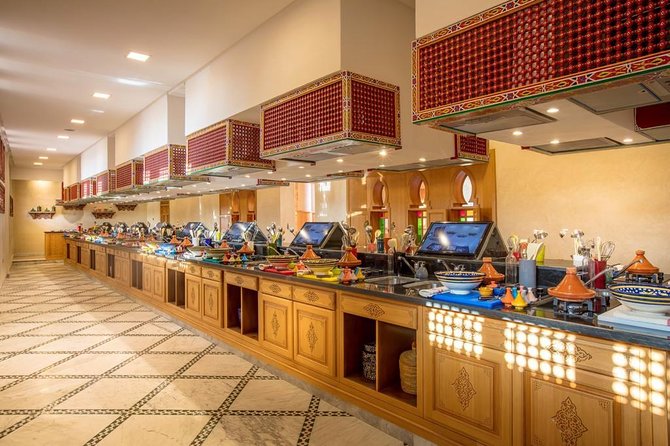
The Moroccan Culinary Arts Museum showcases the rich tapestry of Morocco’s culinary heritage, inviting visitors to enjoy its flavors and traditions.
Located in the heart of Marrakesh, this vibrant museum offers an engaging exploration of traditional recipes and cooking techniques.
With 34 kitchen stations, a Moroccan living room, and a terrace dining area, it creates a unique learning atmosphere.
Guests can appreciate the art of Moroccan food preparation under the guidance of a skilled traditional cook, known as Dada.
The museum also features informative displays on the historical context of Moroccan cuisine, making it a must-visit for foodies.
Admission is affordable, providing an enriching experience without breaking the bank.
You can also read our reviews of more tours and experiences in Atlantic Coast.
Traditional Cooking Classes
Participants can dive into the art of Moroccan cooking through immersive half-day classes that blend hands-on experience with cultural insights.
These classes take place at the Moroccan Culinary Arts Museum, featuring 34 kitchen stations where everyone can learn directly from a traditional cook, known as a Dada.
Here are some highlights of the experience:
- Moroccan bread making: Learn the techniques for crafting authentic bread.
- Herbalist tour: Discover the spices and herbs integral to Moroccan cuisine.
- Cooking class: Engage in preparing traditional dishes.
- Moroccan tea ceremony: Experience the ritual of serving and enjoying mint tea.
With a mix of instruction and cultural exploration, participants leave with newfound skills and memories that celebrate Moroccan culinary heritage.
Sample Menu Highlights

At the heart of the Moroccan culinary experience lies a vibrant sample menu that showcases the rich flavors and traditions of the region.
Guests can begin their meal with delightful starters like Moroccan salads, flaky Pastilla, and savory Briouates, each bursting with spices and local ingredients.
For the main course, the menu features iconic dishes such as Tagines, slow-cooked to perfection, and fluffy Couscous, traditionally served with vegetables and meats.
Each meal comes with bottled water, and guests can enjoy coffee or tea alongside their dishes. Optional alcoholic beverages are also available, enhancing the overall dining experience.
This carefully curated menu not only reflects Morocco’s culinary diversity but also invites everyone to savor its authentic tastes in a warm, inviting atmosphere.
Visitor Reviews and Experiences
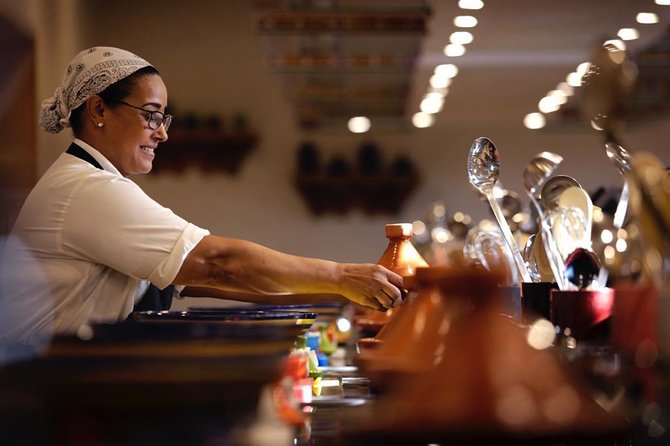
Guest experiences at the Moroccan Culinary Arts Museum reflect a blend of culinary delight and culture.
Visitors rave about the engaging atmosphere and knowledgeable instructors, highlighting the following:
- Well-organized classes that cater to all skill levels.
- Delicious meals featuring authentic Moroccan dishes.
- Beautiful setting that enhances the cooking experience.
- Informative displays that provide insights into Moroccan culinary traditions.
With an impressive overall rating of 4.5 out of 5, most reviewers praise the professional kitchen and the hands-on learning approach.
While some mention minor operational issues, the overwhelming sentiment is one of satisfaction, making this museum a must-visit for culinary enthusiasts eager to explore Morocco’s rich gastronomic heritage.
Historical Context of Moroccan Cuisine
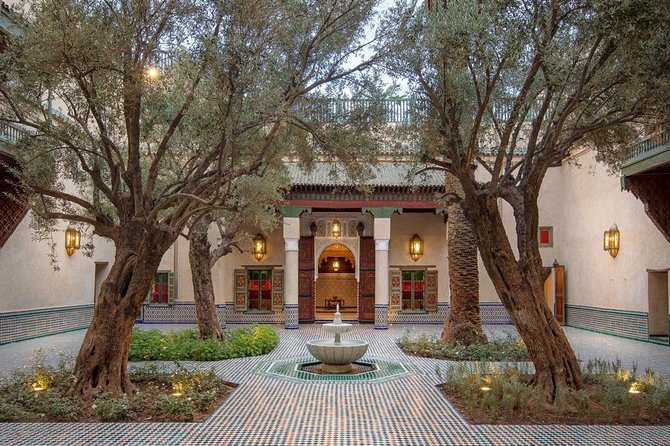
Moroccan cuisine is a vibrant tapestry woven from centuries of cultural exchanges and culinary influences. It reflects the diverse history of Morocco, where Berber, Arab, Andalusian, and Mediterranean traditions collide.
Spices like saffron, cumin, and cinnamon highlight the rich flavors that characterize Moroccan dishes. The introduction of new ingredients by traders and explorers enriched the culinary landscape, leading to iconic dishes such as tagines and couscous.
Historical events, like the Moorish expulsion from Spain, brought new recipes and techniques to Moroccan kitchens. This fusion of flavors and cooking styles isn’t only a testament to Morocco’s past but also a celebration of its ongoing culinary evolution, making each meal a delicious story waiting to be tasted.
Admission and Pricing Details
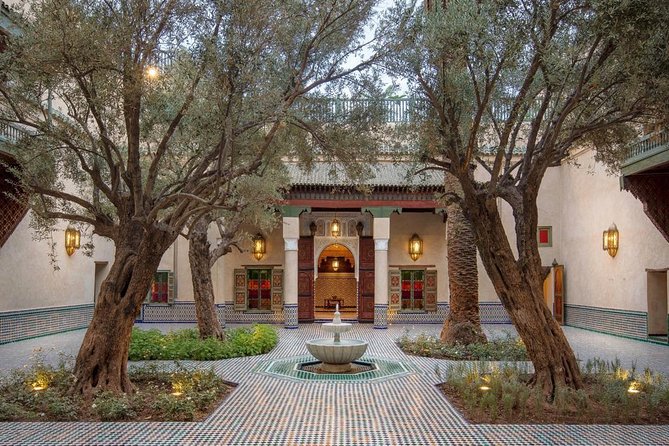
Exploring the rich tapestry of Moroccan culinary heritage at the Moroccan Culinary Arts Museum comes with affordable admission options.
Visitors can enjoy a unique experience for just 40 dirham (approximately $4). For those looking to enhance their visit, tasting options are available for an additional cost.
Key details include:
- Admission Fee: 40 dirham (around $4)
- Tasting Options: Additional fee required
- Booking: Confirmation needed at the time of booking
- Cancellation Policy: Free cancellation up to 24 hours in advance
This budget-friendly approach ensures that anyone can enjoy Morocco’s culinary delights while appreciating its rich history.
The museum’s engaging atmosphere makes it a must-visit for foodies.
Accessibility Features
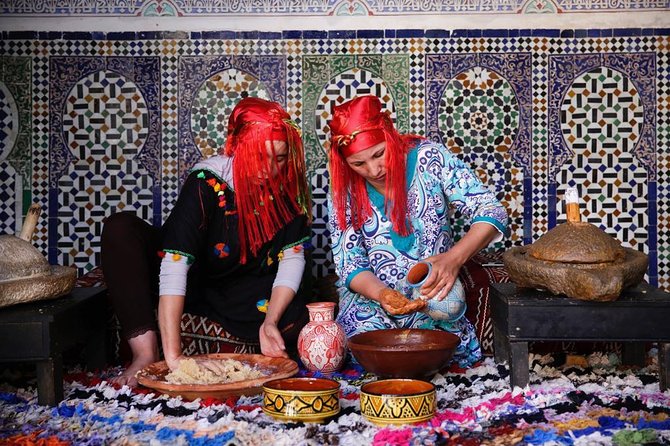
For anyone planning a visit to the Moroccan Culinary Arts Museum, accessibility is a key consideration. The museum ensures that everyone can enjoy its culinary offerings by being wheelchair and stroller-friendly.
Visitors with mobility challenges will find ramps and spacious pathways that facilitate easy navigation throughout the exhibits and cooking areas. Plus, infant seating is available, making it convenient for families with young children.
The layout promotes an inclusive environment, allowing all guests to engage with the rich culinary heritage of Morocco without barriers. By prioritizing accessibility, the museum not only welcomes diverse visitors but also enhances their overall experience, ensuring that everyone can appreciate the art of Moroccan cooking.
Booking Recommendations
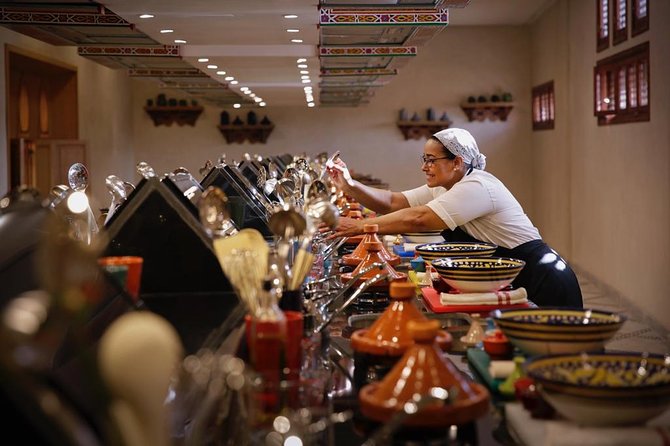
Visitors planning to experience the rich culinary offerings at the Moroccan Culinary Arts Museum should consider making their bookings in advance.
With high demand for cooking classes, securing a spot ahead of time ensures a smooth experience. Here are some booking recommendations:
- Book early to avoid disappointment, especially during peak tourist seasons.
- Confirm your booking at the time of reservation for peace of mind.
- Take advantage of free cancellation up to 24 hours before your class.
- Explore package options that may include tastings or additional activities.
Frequently Asked Questions
What Types of Spices Are Commonly Used in Moroccan Cooking?
In Moroccan cooking, he commonly uses spices like cumin, coriander, saffron, paprika, and cinnamon. These spices create vibrant flavors, enhancing dishes like tagines and couscous, making Moroccan cuisine rich and diverse, appealing to many palates.
How Has Moroccan Cuisine Influenced Other Cultures and Cuisines?
Moroccan cuisine’s rich flavors and diverse ingredients have influenced Mediterranean, African, and Middle Eastern cooking. Its unique use of spices and techniques inspires chefs worldwide, blending cultures and creating vibrant, globally appreciated dishes.
Are There Vegetarian or Vegan Options Available in Cooking Classes?
Yes, the cooking classes offer vegetarian and vegan options. Participants can enjoy preparing traditional dishes that cater to their dietary preferences, ensuring everyone experiences the rich flavors and techniques of Moroccan cuisine in an inclusive environment.
What Are the Origins of Traditional Moroccan Dishes Like Tagine and Couscous?
Traditional Moroccan dishes like tagine and couscous originate from Berber culture, blending influences from Arab, Mediterranean, and African cuisines. These dishes showcase diverse ingredients, reflecting Morocco’s rich agricultural heritage and historical trade routes.
Can I Purchase Moroccan Cooking Tools or Ingredients at the Museum?
Visitors can’t purchase Moroccan cooking tools or ingredients directly at the museum. However, they can explore local markets nearby, where authentic items and spices are readily available, enhancing their culinary experience and connection to Moroccan cuisine.
The Sum Up
To sum it up, the discovery of Moroccan culinary heritage offers a captivating glimpse into a world of rich flavors and cultural exchanges. Whether visiting the Moroccan Culinary Arts Museum, participating in traditional cooking classes, or savoring iconic dishes, foodies find an engaging experience that celebrates the nation’s diverse influences. By exploring its historical context and cooking techniques, visitors not only enjoy delicious meals but also gain a deeper appreciation for Morocco’s vibrant culinary story.
